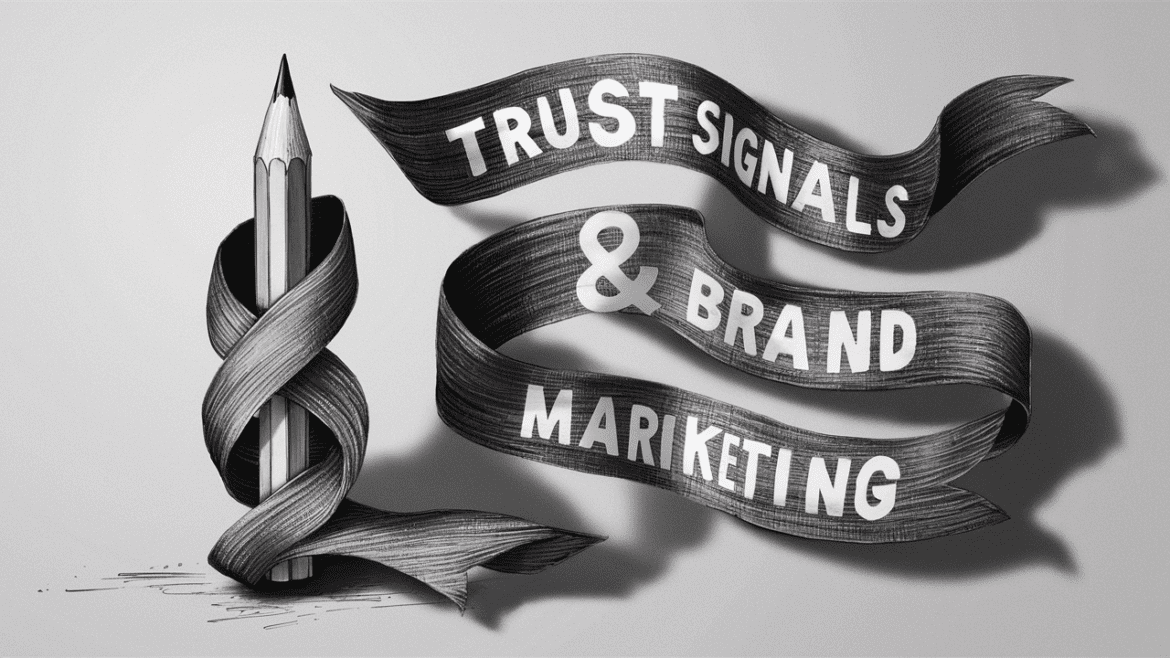Embracing Technology in Marketing
https://www.kraabel.net/wp-content/uploads/2024/07/kraabel_create-o-matic-1024x576.jpg 1024 576 Michael Kraabel Michael Kraabel https://www.kraabel.net/wp-content/uploads/2024/07/kraabel_create-o-matic-1024x576.jpgThe marketing industry has always been a fertile ground for innovation, often driven by the latest technological advancements. In 2024, this trend shows no sign of abating. Instead, technology continues to act as a powerful disruptor, reshaping how we connect with audiences, craft narratives, and measure success.
While the adoption of new tools invariably raises concerns about job displacement, it also underscores a critical reality: the future of marketing hinges on our ability to harness these tools to generate bigger, bolder ideas.
Historically, each wave of technological innovation has sparked a mix of excitement and trepidation within the marketing community. I remember my initial resistance to WYSIWYG web editors, fearing that they would undermine the craftsmanship of web design. Similarly, the advent of AI-generated content raised alarms about the potential obsolescence of human creativity. Yet, time and again, these innovations have proven to be invaluable assets, not threats.
The integration of AI and other advanced technologies into marketing workflows exemplifies this dynamic. AI can analyze vast amounts of data to uncover insights that would take humans exponentially longer to discover. It can automate repetitive tasks, freeing up creative minds to focus on strategy and innovation. However, the human element remains irreplaceable. Technology amplifies our capabilities, but it is our creativity, empathy, and strategic thinking that drive meaningful connections with audiences.
Change, while intimidating, can be a catalyst for growth for companies willing to experiment. Embracing new technologies requires a willingness to step out of comfort zones and explore uncharted territories. This spirit of experimentation often leads to breakthroughs that set brands apart in a crowded marketplace. As marketing professionals, our role is to guide these explorations, ensuring that technology serves our overarching goals of creating more engaging and human experiences.
The proliferation of new tools and platforms makes it more critical than ever for experienced marketers to lead the charge. Organizations need individuals who understand that technology is a means to an end, not an end in itself. These leaders can discern which tools will enhance their strategies and which are mere distractions. Their experience equips them to navigate the complexities of integrating new technologies while clearly focusing on the human element that defines impactful marketing.
The Birth of Modern Advertising: Print and Radio
The advertising industry as we know it began in the late 19th and early 20th centuries with the rise of print media. Newspapers and magazines provided the first mass platforms for advertisers to reach a broad audience. The advent of radio in the 1920s further transformed the landscape, allowing brands to connect with consumers in a more personal and immediate way. These innovations disrupted traditional word-of-mouth and local advertising methods, setting the stage for a century of rapid technological advancement.
The Television Revolution: Visual Storytelling Takes Center Stage
The introduction of television in the 1950s marked another seismic shift. TV combined the reach of radio with the visual impact of print, creating a powerful medium for storytelling. Advertisers could now craft compelling narratives with sound, motion, and color, captivating audiences like never before. This era saw the birth of iconic ad campaigns that became cultural touchstones. Television’s disruptive impact was profound, as it reshaped consumer behavior and set new standards for advertising creativity and production.
The Digital Age: Internet and Social Media
The late 20th century ushered in the digital age, beginning with the rise of the internet. The 1990s saw the emergence of online advertising, with banners, pop-ups, and email marketing becoming commonplace. This period was marked by the transition from traditional media to digital platforms, offering unprecedented targeting and tracking capabilities.
The 2000s brought the explosive growth of social media, revolutionizing how brands engage with consumers. Platforms like Facebook, Twitter, and Instagram allowed for two-way communication, user-generated content, and viral marketing campaigns. Social media’s disruptive power lay in its ability to create communities and foster direct interactions between brands and their audiences, forever changing the dynamics of consumer engagement.
The Mobile Era: Advertising on the Go
The proliferation of smartphones in the 2010s introduced yet another wave of disruption. Mobile advertising became a critical component of marketing strategies, with apps, mobile websites, and location-based services providing new ways to reach consumers. The shift to mobile required advertisers to rethink their approaches, emphasizing quick, impactful messages suited for on-the-go consumption. This era also saw the rise of influencer marketing, where social media personalities became powerful brand ambassadors.
The AI and Data Analytics Revolution: Precision and Personalization
In the 2020s, artificial intelligence (AI) and data analytics have emerged as the latest disruptive forces. AI-powered tools can analyze consumer behavior, predict trends, and automate content creation. Machine learning algorithms enable hyper-personalized marketing, delivering tailored messages to individual consumers at scale. These technologies have transformed how advertisers approach campaign planning and execution, offering insights and efficiencies previously unimaginable.
Data analytics, meanwhile, provides a granular understanding of consumer preferences and behaviors. By leveraging big data, marketers can refine their strategies and measure the effectiveness of their efforts with precision. This era underscores the importance of data-driven decision-making and the potential of AI to revolutionize every aspect of marketing.
What’s Next in Advertising Technology
As these emerging technologies continue to evolve, they will bring new opportunities and challenges for advertisers. The key to success lies in staying ahead of the curve, experimenting with new tools, and continuously adapting strategies to leverage the latest innovations. By embracing these technologies, brands can create more engaging, personalized, and impactful advertising experiences that resonate with the consumers of tomorrow.
Immersive Experiences: Augmented Reality (AR) and Virtual Reality (VR)
Augmented Reality (AR) and Virtual Reality (VR) are poised to revolutionize advertising by creating immersive, interactive experiences for consumers. AR overlays digital content onto the physical world, enhancing real-world environments with engaging visuals and information. Brands can use AR for virtual try-ons, interactive product demos, and gamified experiences that captivate audiences and drive engagement.
VR, on the other hand, offers fully immersive experiences that transport users to entirely virtual environments. This technology is ideal for storytelling, allowing brands to create compelling narratives that users can experience firsthand. VR can be used for virtual tours, immersive brand experiences, and interactive storytelling that deepen emotional connections with consumers.
Voice Search and Smart Assistants: Conversational Commerce
Voice search and smart assistants like Amazon’s Alexa, Google Assistant, and Apple’s Siri are changing how consumers interact with brands. As these technologies become more integrated into daily life, they offer new opportunities for conversational commerce. Brands can develop voice-activated skills and applications that allow consumers to interact with products and services seamlessly through voice commands.
Voice search optimization is becoming increasingly important, as consumers use voice queries to find information, make purchases, and engage with brands. Advertisers must adapt their strategies to ensure their content is discoverable through voice search and that their brand voice aligns with the conversational nature of these interactions.
AI-Driven Personalization: Hyper-Targeted Marketing
Artificial Intelligence (AI) continues to advance, enabling even greater levels of personalization in advertising. AI algorithms can analyze vast amounts of data to understand individual consumer preferences and behaviors. This allows brands to deliver hyper-targeted marketing messages that resonate on a personal level.
Predictive analytics, powered by AI, can forecast consumer trends and behaviors, enabling proactive marketing strategies. AI-driven chatbots and virtual assistants can provide personalized customer service and support, enhancing the overall customer experience. The next wave of AI innovation will focus on creating seamless, personalized interactions that build deeper relationships between brands and consumers.
Blockchain Technology: Transparency and Trust
Blockchain technology offers the potential to address some of the most pressing challenges in digital advertising, such as transparency, fraud, and data privacy. Blockchain’s decentralized nature ensures that all transactions are recorded on a public ledger, providing transparency and accountability.
In advertising, blockchain can be used to verify ad impressions and clicks, reducing fraud and ensuring that advertisers are getting what they pay for. It can also enhance data privacy by giving consumers more control over their personal information and how it is used by advertisers. As trust becomes an increasingly important factor in consumer relationships, blockchain technology will play a crucial role in building and maintaining that trust.
The Internet of Things (IoT): Connected Consumer Experiences
The Internet of Things (IoT) is creating a network of connected devices that can communicate with each other and with consumers. This technology enables brands to deliver highly contextualized and relevant advertising experiences based on real-time data from IoT devices.
For example, smart home devices can provide insights into consumer habits and preferences, allowing brands to deliver targeted offers and content. Connected cars can offer location-based advertising and services, enhancing the driving experience. The IoT will enable brands to create integrated, omnichannel experiences that seamlessly blend the physical and digital worlds.
Embracing the Future
From the earliest print ads to today’s AI-driven campaigns, disruptive technologies have continuously reshaped the advertising industry. Each new innovation has brought challenges and opportunities, pushing marketers to adapt and evolve. As we look to the future, the key to success lies in our ability to embrace change, leverage new tools effectively, and maintain a focus on creating meaningful, human-centered experiences. The next wave of technological advancements will undoubtedly bring its own disruptions, but with it, the potential for even greater creativity and impact in marketing and branding.

















